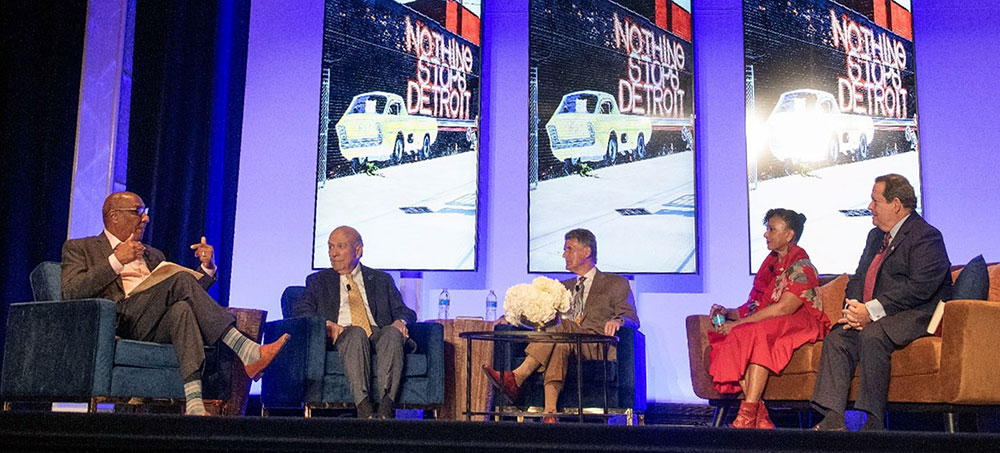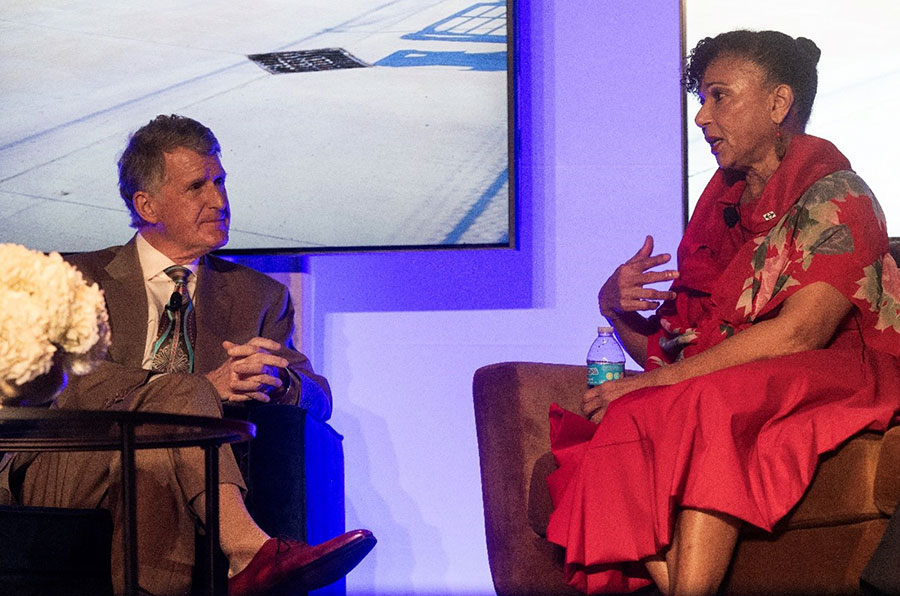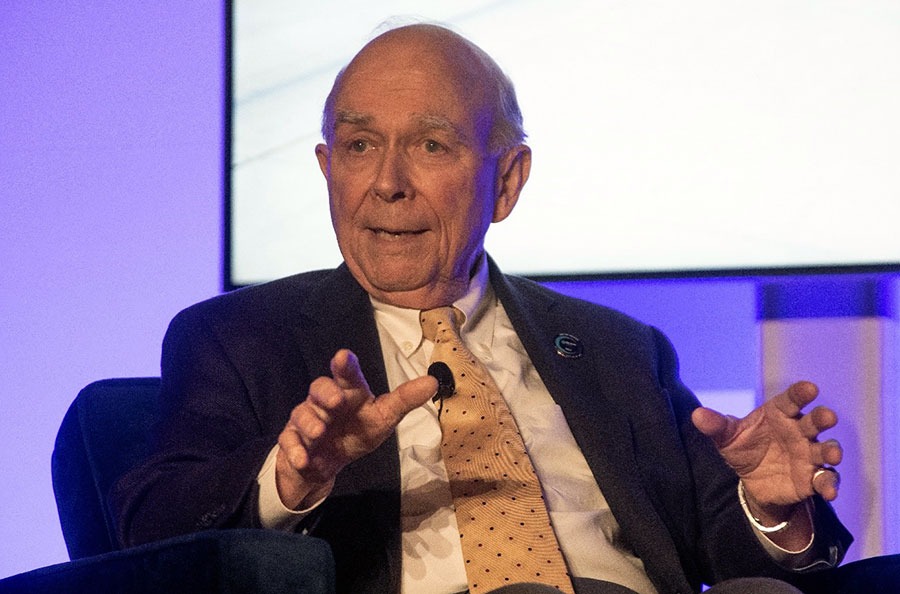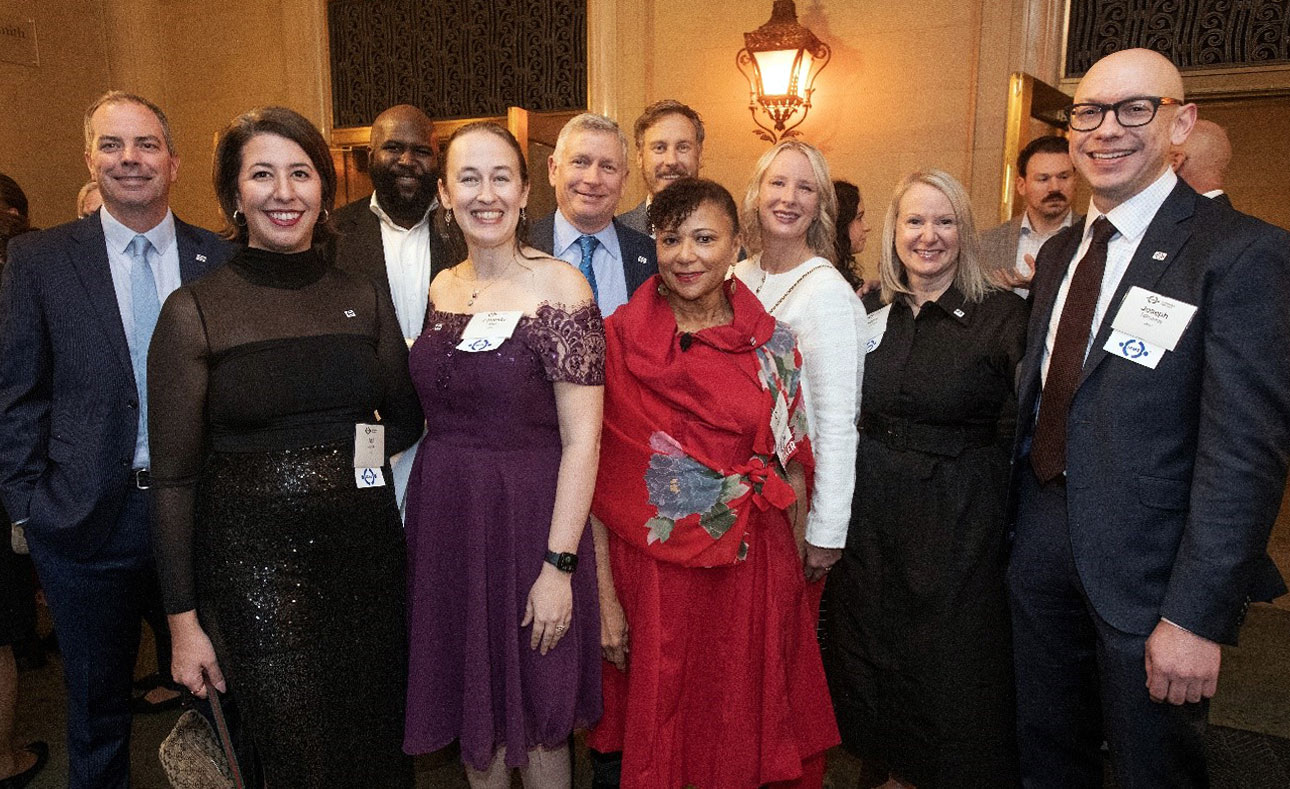From Bankruptcy to Rebirth
JAMS recently hosted From Bankruptcy to Rebirth: Celebrating Detroit Ten Years Into Its Resurgence, an event reflecting on one of the most complex municipal bankruptcies in U.S. history. The discussion brought together legal, business, and civic leaders who played a pivotal role in Detroit’s transformation. With insight from former U.S. Bankruptcy Judge Steven W. Rhodes, former Detroit emergency manager Kevyn Orr, and JAMS neutrals Hon. Victoria A. Roberts and Hon. Gerald Rosen (Ret.), the evening highlighted the power of mediation, negotiation, and collaboration in resolving high-stakes disputes.
Detroit’s Defining Moment
In 2013, Detroit became the largest U.S. city to file for bankruptcy, a moment that many feared would mark the city’s decline. Instead, it became a turning point. The bankruptcy proceedings, overseen by Judge Rhodes, were not just about finances—they were about securing a future for Detroit’s residents. Kevyn Orr, appointed as emergency manager, emphasized that while numbers were at the heart of the case, the real stakes were the lives of Detroit’s citizens:
"Chapter nine was never about money. It was about better services to citizens."
The crisis demanded not only legal expertise but also the ability to navigate deep political, racial, and social divide.

- • Detroit's Defining Moment (10:50)
- • A Model for Complex Dispute Resolution (44:20)
- • Crafting the Grand Bargain (1:02:32)
- • The Most Expensive Breakfast in History (46:55)
- • Looking Ahead (1:35:45)
A Model for Complex Dispute Resolution

The Detroit bankruptcy was a case study in alternative dispute resolution (ADR) at the highest level, requiring multiple layers of mediation to resolve disputes between the city, unions, creditors, and key stakeholders.
One of the most critical challenges was securing agreements between Detroit’s government and its labor unions, whose members had endured wage cuts, pension reductions, and threats of privatization. Hon. Victoria Roberts (Ret.), one of the court-appointed mediators, played an essential role in brokering 48 collective bargaining agreements—a daunting task given the deep distrust between the unions and city officials. Her work demonstrated how structured mediation could bridge entrenched divides and move negotiations forward where litigation might have prolonged the crisis.
At the same time, the broader bankruptcy mediation process was led by Hon. Gerald Rosen (Ret.), the chief mediator who orchestrated the negotiations that led to the Grand Bargain itself. Rosen’s role was to bring together a diverse set of stakeholders—including the city, state, philanthropic institutions, and major creditors—to craft a deal that could both protect Detroit’s pensioners and preserve the Detroit Institute of Arts from asset liquidation.
Through bold collaboration and creative problem-solving, the mediators in the Detroit bankruptcy demonstrated how ADR can deliver results beyond what traditional litigation can achieve. Their efforts not only helped Detroit emerge from bankruptcy in record time but also set the stage for a groundbreaking agreement that would define the city’s recovery.
Crafting the Grand Bargain
At the center of the bankruptcy resolution was what became known as the Grand Bargain—a deal that protected Detroit’s retirees while securing the future of the Detroit Institute of Arts (DIA). The bold negotiations involved the city, state, philanthropic institutions, and creditors, all working toward a shared goal: ensuring Detroit’s survival.

One of the evening’s most compelling moments came from Hon. Gerald Rosen (Ret.), who served as the chief mediator of the bankruptcy. He recalled the moment he conceptualized the Grand Bargain, an idea that would ultimately secure $820 million in funding from the state and private donors:
“In a public square filled with pessimism, we found helping hands… We learned that even in a time of political polarization, with trust in each other, Americans can still find common ground for the greater good.”
His words underscored the power of mediation in bridging seemingly impossible divides.
Rosen was not alone in leading these negotiations. His close advisor, the late Eugene Driker, played a crucial role in engaging key stakeholders early in the process. Driker, a respected attorney and mediator, helped lay the groundwork for the Grand Bargain by initiating conversations with funders and civic leaders as early as October of that year. Rosen referred to him as his “strong right arm,” recognizing his lasting impact on the success of the negotiations.
In addition to reflecting on the bankruptcy negotiations, the event also served as the debut for Judge Rosen’s new book, The Grand Bargain: The Inside Story of Detroit’s Bankruptcy. The book offers an insider’s account of the legal, financial, and political maneuvering that shaped the Grand Bargain, as well as the personal stories of those involved in Detroit’s fight for survival.
Attendees had the unique opportunity to hear Rosen discuss not only the mediation process but also exclusive insights from his book—offering a deeper look at the collaboration, conflict, and creativity that made the Grand Bargain possible. As the discussion unfolded, it became clear that Detroit’s story is not just about bankruptcy; it’s about resilience, leadership, and the power of mediation to drive meaningful change.
The Most Expensive Breakfast in History

But even with a bold vision in place, securing the necessary funding remained a formidable challenge. Gene Gargaro, then chairman of the Detroit Institute of Arts (DIA), soon found himself at the center of it—sitting across from Governor Rick Snyder at an early morning meeting in Washington, D.C., where the stakes would be higher than he ever expected.
What followed was a high-stakes moment in the bankruptcy negotiations—an early morning meeting in Washington, D.C., that would put Detroit’s future on the line. Gargaro met with Michigan Governor Rick Snyder, expecting to pledge $50 million from the museum to help fund the Grand Bargain. But Snyder, armed with financial data and a clear vision of what was needed, had a different number in mind. He looked across the table and told Gargaro, "I need $100 million."
Faced with a split-second decision, Gargaro agreed—despite having no clear plan on how to raise the additional funds. What followed was a nine-month, high-stakes fundraising campaign that saw contributions from donors across the world, all rallying to save the DIA and protect Detroit’s pensioners. The moment became known as “the most expensive breakfast in history”, a pivotal turning point in securing the Grand Bargain.
Looking Ahead

As Detroit continues to thrive, the principles behind its bankruptcy resolution remain relevant. For legal professionals and ADR practitioners, the case is a testament to the transformative impact of mediation, judicial leadership, and creative problem-solving.
JAMS is proud to have two of the Detroit bankruptcy mediators on its roster of neutrals and to have played a role in fostering these critical discussions. We remain committed to advancing innovative solutions for complex disputes.
Disclaimer:
This page is for general information purposes. JAMS makes no representations or warranties regarding its accuracy or completeness. Interested persons should conduct their own research regarding information on this website before deciding to use JAMS, including investigation and research of JAMS neutrals. See More
